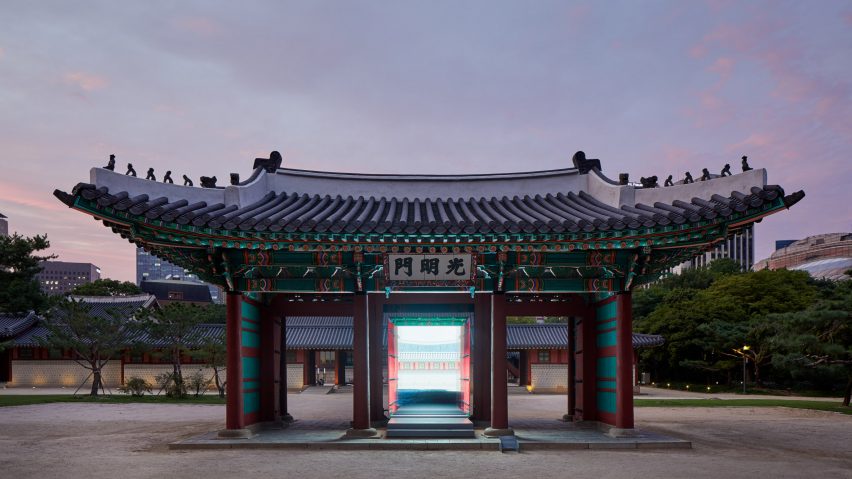
Gate of Bright Lights by Space Popular is a portal to a digital world
Design practice Space Popular has inserted a video installation in the gate of a historic palace in Seoul to show viewers the past and the future.
Called Gate of Bright Lights, the project is an invitation for passers-by to see how screens are portals to digital realms, and symbols of South Korea's place in the modern economy.
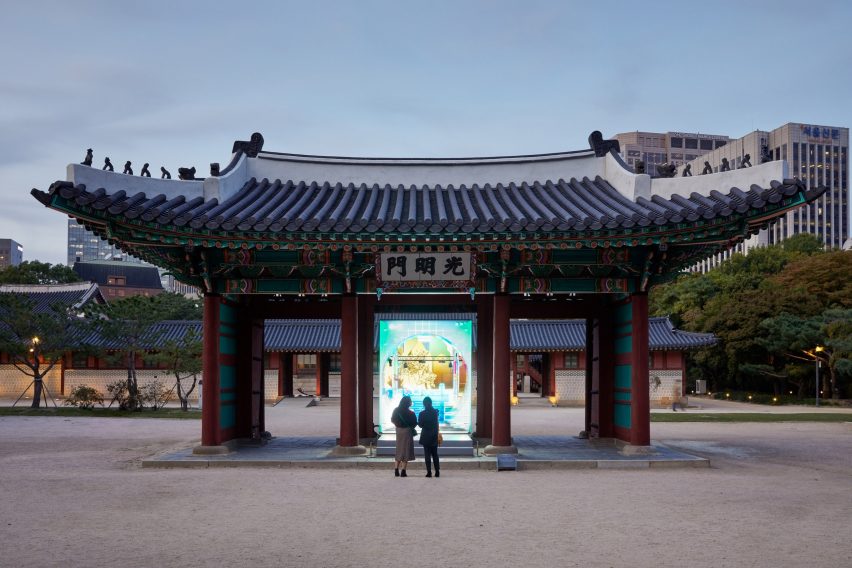
The screens sit in the middle opening of the Gwangmyeongmun Gate at Deoksugung Palace and play a video of a digitally-rendered wooden gate opening and shutting to reveal different scenes.
"Every time the doors of the Gate of Bright Lights shut they reveal a different design, and every time they open a new and stranger space is revealed," said Space Popular.
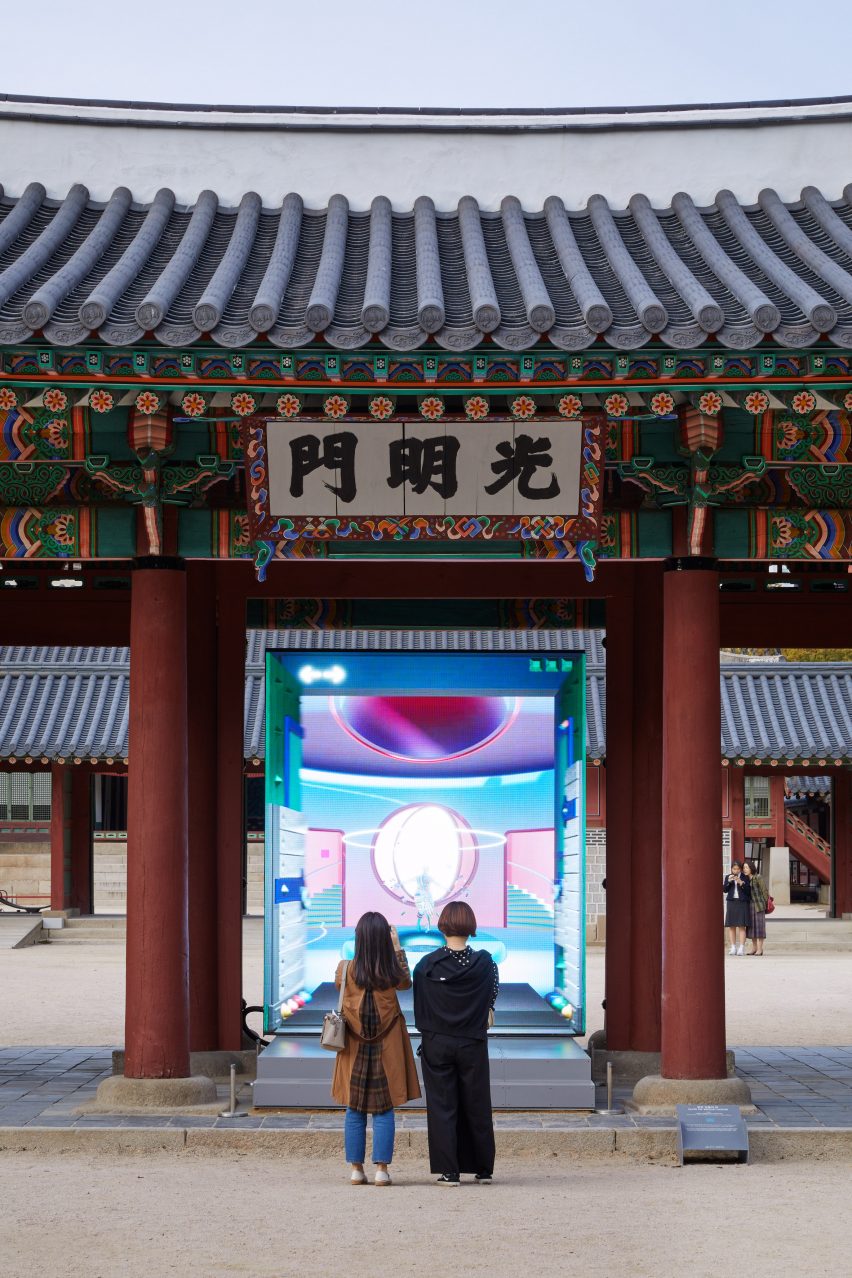
First the doors open to a view from a hundred years in the past, when the palace was still used by Korea's imperial family, the House of Yi.
Then it closes with a different, more ornate door, before opening to reveal an internet chat room.
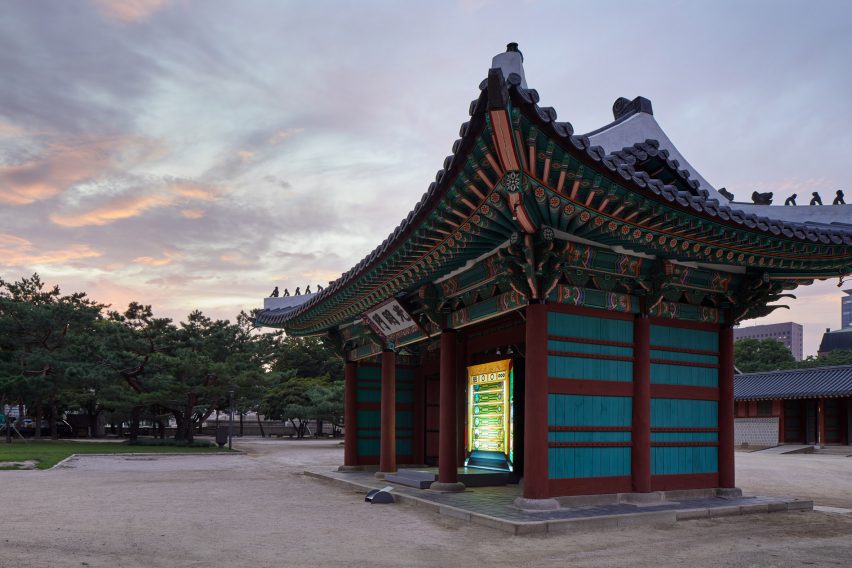
The video sequence was created to draw parallels between how the palace gates once operated as the connection to the imperial family, and how today devices such as smartphones are portals to digital platforms that hold a similar level of significance in people's lives.
"Royal palaces have historically been a form of architectural mass media," said the studio in the exhibition text.
"Fortified with decoratively laid stones, held up by intricate columns and sheltered by highly ornate grand eaves, the architecture of the palace spoke to those who it was keeping out of a mystique and splendour beyond their wildest imagination and, in doing so, constructed an ideal of just and right governance."
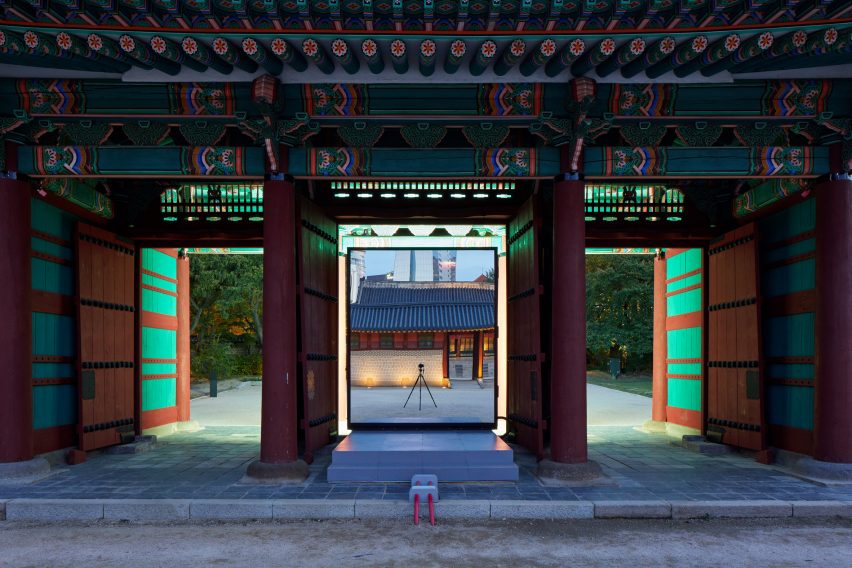
The reign of the House of Yi ended when Japan annexed the Korean peninsula in 1910, with the Deoksugung Palace being mostly destroyed in 1933.
By the time Korea was liberated from colonial rule in 1945, new media such as radio and newspapers had become the main channel of communication for state leaders.
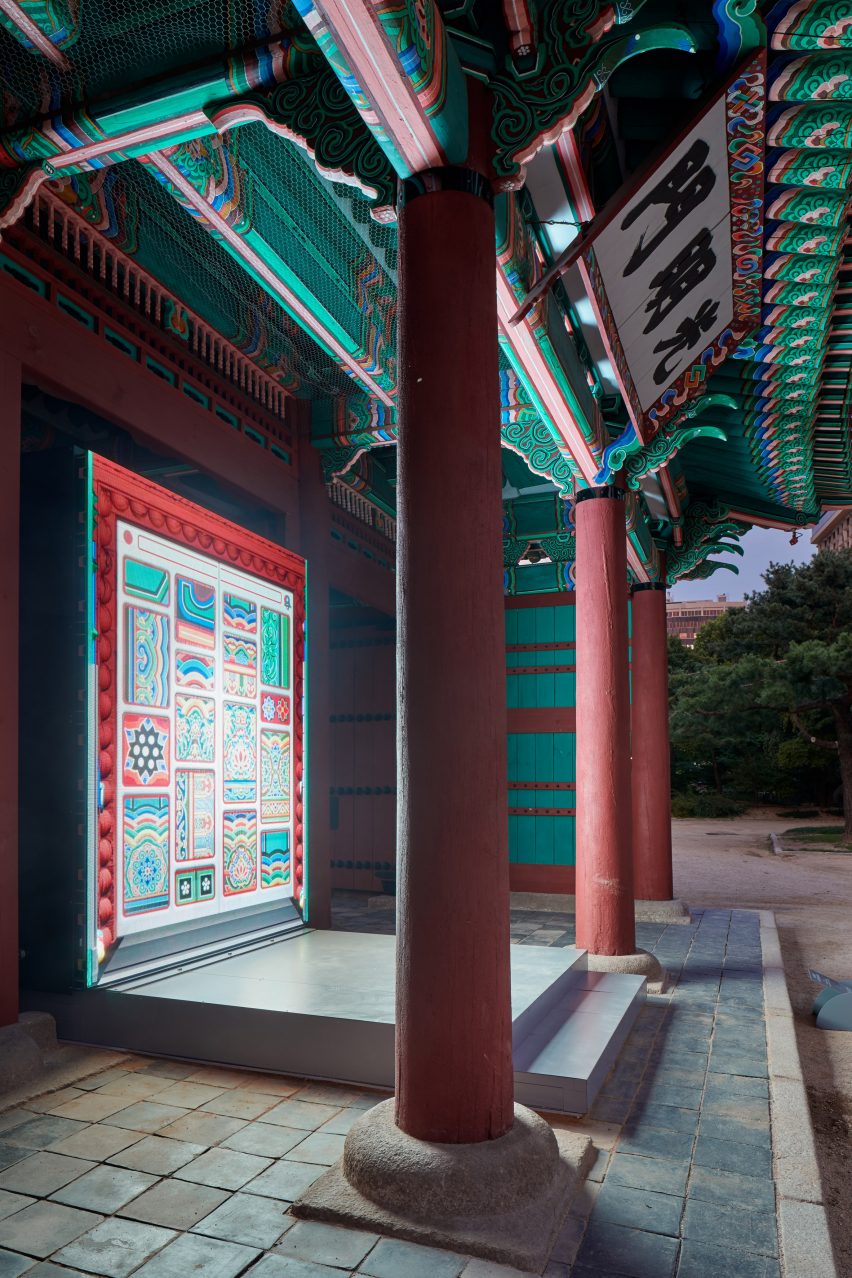
Today, South Korea exports the integrated circuits, or chips, required to power computers and smartphones.
As a public art work, Gate of Bright Lights' screen display is designed to be a symbol of this.
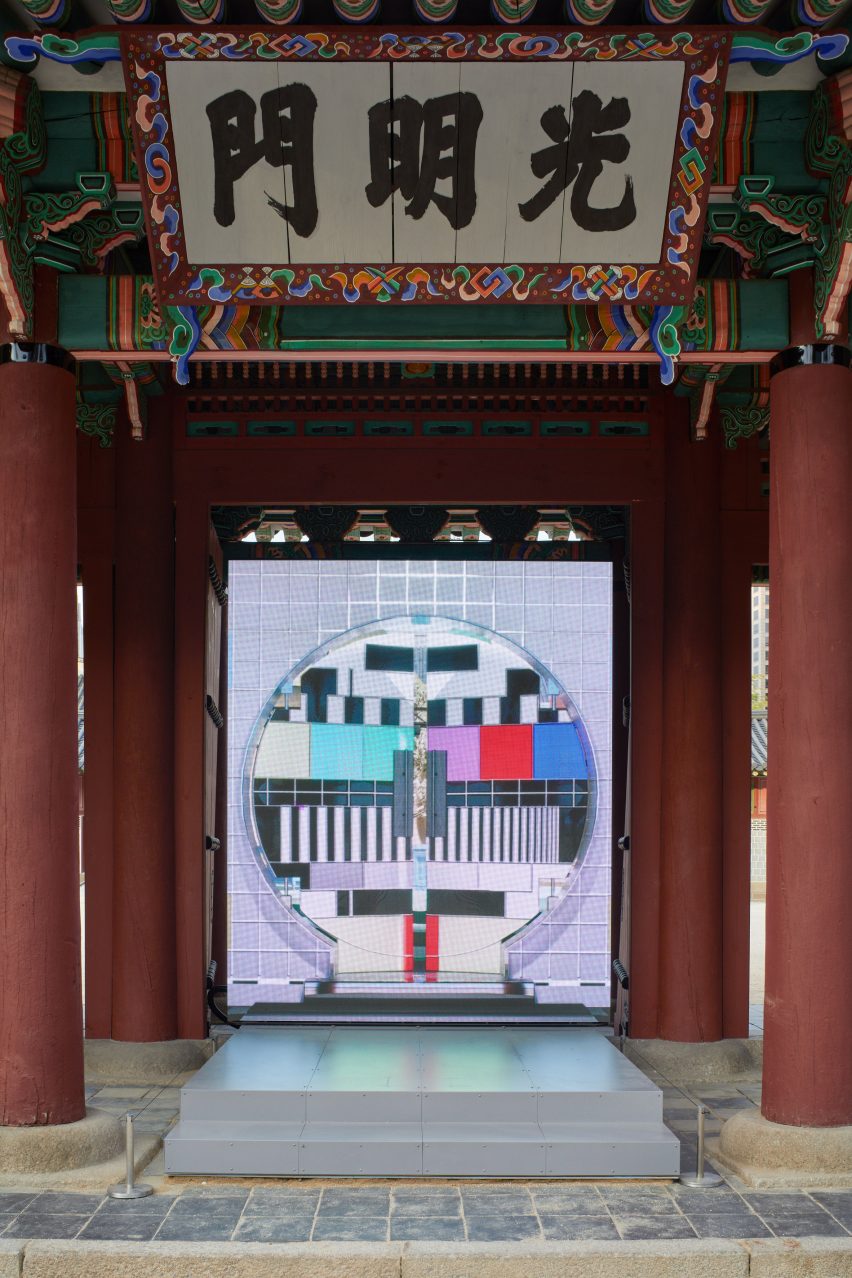
"Through social media, websites and blogs, everyone is now the ruler of their own palace with gates open to the public through the platforms and interfaces of a connected digital world," said Space Popular.
"These new virtual palaces in which we increasingly live our lives are much like the highly structured ornamental system of Dancheong, carefully ordered through icons, buttons, links, and feeds and laboriously decorated with colours, fonts, layouts and graphics."
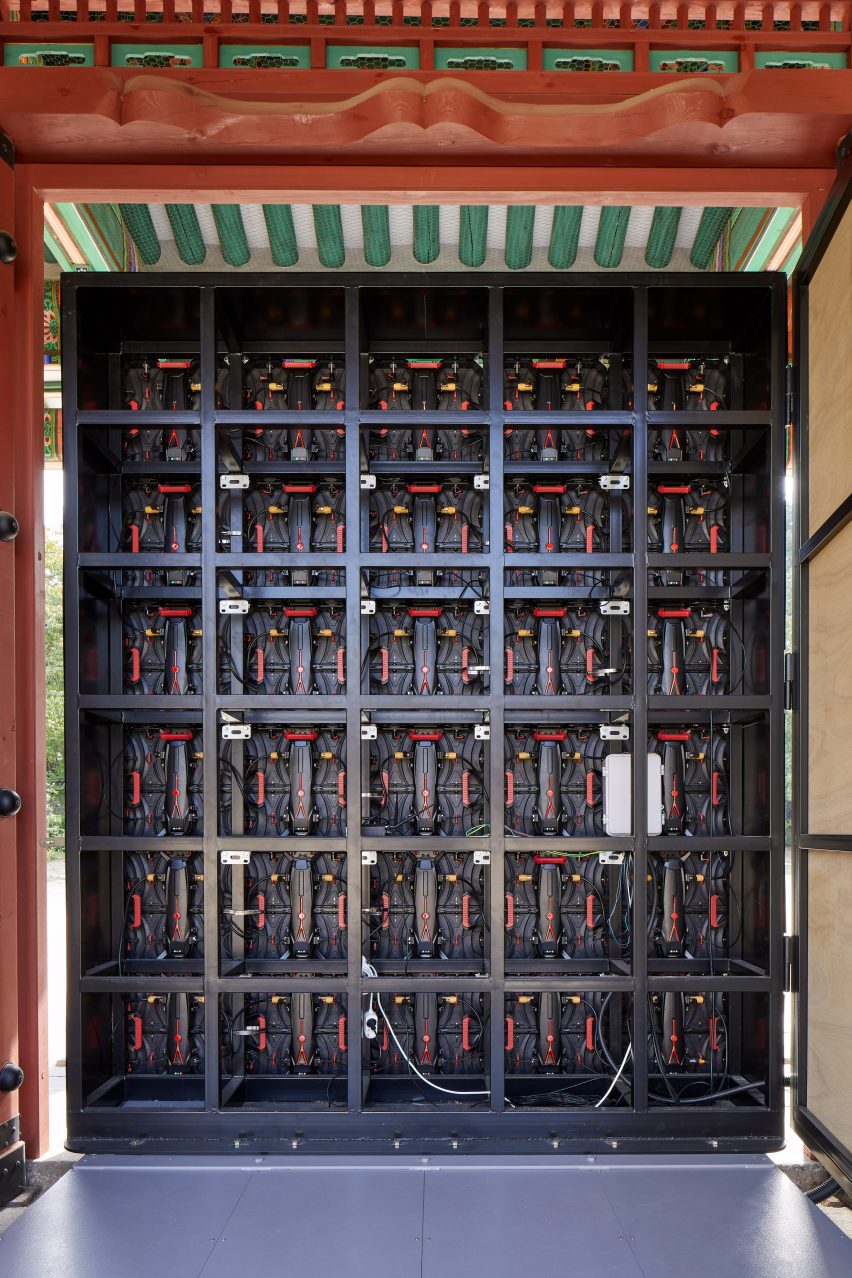
Space Popular created the site specific video installation as part of the Architecture and Heritage: Unearthing Future exhibition at the National Museum of Modern and Contemporary Art.
The design studio, which was founded by Lara Lesmes and Fredrik Hellberg, has also designed a spa in Bangkok.
Photography is by Kyung Roh.
Project credits:
Design: Space Popular
Designers: Lara Lesmes, Fredrik Hellberg, Ludvig Holmen
Client: MMCA – National Museum of Modern and Contemporary Art
Curator: Jihoi Lee